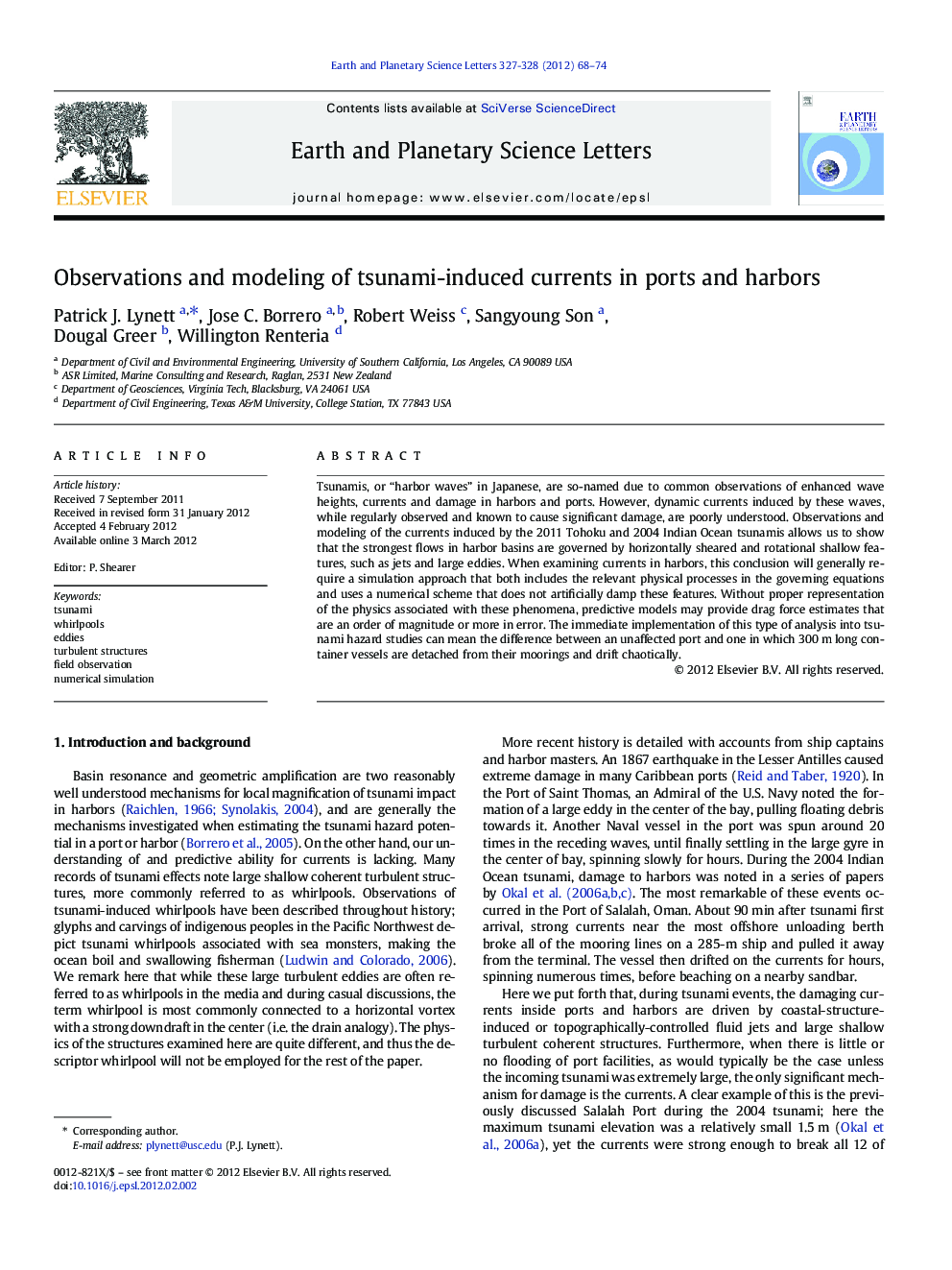| Article ID | Journal | Published Year | Pages | File Type |
|---|---|---|---|---|
| 4677570 | Earth and Planetary Science Letters | 2012 | 7 Pages |
Tsunamis, or “harbor waves” in Japanese, are so-named due to common observations of enhanced wave heights, currents and damage in harbors and ports. However, dynamic currents induced by these waves, while regularly observed and known to cause significant damage, are poorly understood. Observations and modeling of the currents induced by the 2011 Tohoku and 2004 Indian Ocean tsunamis allows us to show that the strongest flows in harbor basins are governed by horizontally sheared and rotational shallow features, such as jets and large eddies. When examining currents in harbors, this conclusion will generally require a simulation approach that both includes the relevant physical processes in the governing equations and uses a numerical scheme that does not artificially damp these features. Without proper representation of the physics associated with these phenomena, predictive models may provide drag force estimates that are an order of magnitude or more in error. The immediate implementation of this type of analysis into tsunami hazard studies can mean the difference between an unaffected port and one in which 300 m long container vessels are detached from their moorings and drift chaotically.
► We discuss shallow coherent turbulent structures, or eddies, induced by tsunamis. ► Tsunami-induced eddies can be the dominant current mechanism in ports. ► Conventional approaches may not represent of the physics of these phenomena. ► Existing models may yield drag forces with order of magnitude or more of error.
